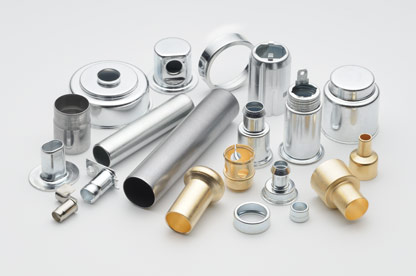Adapting to Evolution: Sheet Metal Working and CNC Industry's Response to Changing Customer Needs+ View more
Adapting to Evolution: Sheet Metal Working and CNC Industry's Response to Changing Customer Needs
+ View more
Date:2023-11-17 17:00
Introduction:
In a world of rapid technological evolution and dynamic market demands, the sheet metal working and CNC (Computer Numerical Control) industry find themselves at the intersection of innovation and customer-centricity. This article delves into the imperative for these industries to keep pace with changing customer needs, exploring how adaptability, customization, and responsiveness are becoming crucial factors in maintaining competitiveness and meeting the evolving expectations of the market.

1. Customization and Personalization Trends:
One of the significant shifts in customer needs is the growing demand for customized and personalized products. Sheet metalworking and CNC technologies are evolving to accommodate this trend, with the ability to produce tailored designs, varying sizes, and unique specifications. The industry's responsiveness to individualized customer requirements is becoming a key differentiator in the competitive landscape.
2. Flexible Production Processes:
The traditional rigid production processes in the sheet metal working and CNC industry are giving way to flexibility and agility. Manufacturers are investing in adaptable CNC machines and sheet metal processing techniques that can swiftly switch between different product specifications. This flexibility enables quicker response times to market demands and the efficient production of diverse product lines.
3. Shorter Time-to-Market Requirements:
Customer expectations for rapid product development and delivery are reshaping the industry's approach to time-to-market. CNC machines and sheet metal processing technologies are being optimized for faster production cycles, from design to fabrication. By embracing advanced software solutions and streamlined workflows, manufacturers can meet the increasing need for swift response to market trends.
4. Integration of Digital Customer Interfaces:
The digital age has ushered in a new era of customer interaction. Sheet metalworking and CNC industry players are incorporating digital interfaces for customers to submit design specifications, track orders, and provide real-time feedback. This integration enhances communication, reduces lead times, and fosters a collaborative partnership between manufacturers and their clientele.
5. Focus on Sustainable and Environmentally Friendly Solutions:
Changing customer needs include a heightened awareness of environmental impact. The sheet metal working and CNC industry is responding by incorporating sustainable practices, from eco-friendly material choices to energy-efficient manufacturing processes. Manufacturers are aligning their offerings with customer preferences for environmentally conscious solutions.

6. Emphasis on Cost-Efficiency and Value:
While customization and sustainability are crucial, customers also emphasize cost-efficiency. The sheet metalworking and CNC industries are innovating in ways that balance customization with cost-effectiveness, providing value-driven solutions. This may involve process optimization, material efficiency, and strategic cost management to meet diverse customer budgets.
7. Continuous Investment in R&D:
To stay abreast of evolving customer needs, the sheet metal working and CNC industry are making continuous investments in research and development (R&D). This involves exploring emerging technologies, testing new materials, and refining manufacturing processes to align with the ever-changing demands of the market.
Conclusion:
As customer needs continue to evolve, the sheet metal working and CNC industry are undergoing a transformative journey towards adaptability, customization, and sustainability. The ability to anticipate and respond to these changing dynamics will define the success of manufacturers in this competitive landscape. By embracing flexibility, integrating digital interfaces, and maintaining a focus on innovation, the industry is well-positioned to not only keep up with market trends but also to lead the way in delivering solutions that truly resonate with the diverse needs of modern customers.
Share to:
Recommend wonderful blog posts

